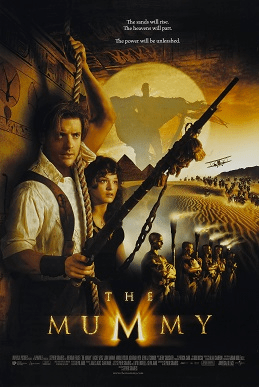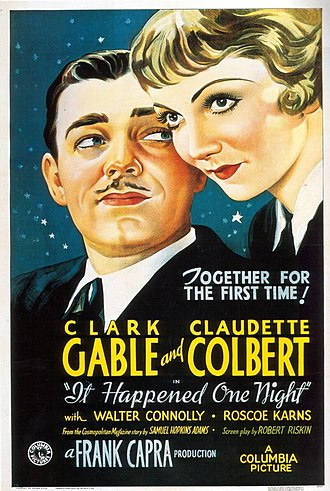If The Lord of the Rings started the fire of my movie passions, then The Princess Bride fanned the flames. I mean, what’s not to love? This movie has it all: fencing, fighting, torture, revenge, giants, monsters, chases, escapes, true love, miracles. A good film is when all the parts come together well. A great film is more than the some of its parts. And a perfect film is The Princess Bride, and we all know there’s a shortage of perfect films in this world. Considered unfilmable for nearly 15 years, author and screenwriter, William Goldman (whom I know I have mentioned before because he’s so mindbogglingly eclectic), was beginning to get discouraged before Rob Reiner met with him. Reiner was determined to make the movie and got ahold of Norman Lear, whom he knew from All in the Family (oh yeah, I don’t know if I mentioned it before, but Rob Reiner was “Meathead” on the show, if that helps you put a face to the name), to fund it. Reiner wanted the best of the best for his cast and crew, so he had Goldman write the script for the adaptation of his own novel, he brought on Bob Anderson to teach fencing to Cary Elwes and Mandy Patinkin for their cliff-side duel (Anderson has choreographed sword fights for Highlander, The Mask of Zorro, The Lord of the Rings, The Three Musketeers, and Star Wars, he trained Errol Flynn and Burt Lancaster, and he was also taught fencing by Akos Moldovanyi, the last man in Europe to preside a sabre duel), and he got Mark Knopfler (the beginning and end of Dire Straits) to do the score.
The movie follows the novel’s framing device of a grandfather reading a book called The Princess Bride to his sick grandson (though, in the book, it’s a father reading to his son), and occasionally, scenes are interrupted due to the grandson or grandfather’s commentary. In the book, this is much more in depth. William Goldman writes of a fictitious version of himself who remembers his father reading him a story called The Princess Bride by an author named “S. Morgenstern”, who wrote about his native land, Florin, and its rival country, Guilder. Goldman explains how he loved the book as a child and wanted his own son to read it, so he scoured the world for a copy, but once he presents it to his son, he is dismayed to learn the boy can’t get into it. Goldman discovers the “book” is more of satire of Florin politics, and when his dad read it to him, he skipped all the political commentary, reading only the “good parts”. Goldman then explains he is doing for the published work what his dad did for him: abridging the full novel to just “the good parts”. I appreciate Goldman at least keeping this in the movie in part, but you can perhaps see why it’s tweaked a bit. But that idea of the bedtime story is what makes all the silly, unbelievable (you might say “inconceivable”) stuff in the book/movie work.
Buttercup is a farm girl in the countryside of Florin. She’s demanding of her farm boy, Westley, who only ever replies with “As you wish”. Buttercup realizes he means “I love you” when he says it and realizes she loves him as well. Westley travels across the sea to make enough money for them to marry, but some time later, Buttercup receives a letter saying his ship was attacked by the Dread Pirate Roberts, who notoriously never leaves captives alive. She realizes she can never love anyone as much as she loved Westley, so she becomes greatly depressed and agrees to marry Prince Humperdinck, though she knows it will be a loveless marriage. Before the wedding, Buttercup is kidnapped Vizzini, Inigo and Fezzik and taken to Guilder. However, they are being followed by a small ship, and so they try to escape their pursuer by climbing the Cliffs of Insanity. They reach the top and cut the rope they used, but their pursuer, a man in black, is still following them and climbing the cliff wall. Vizzini decides Inigo will stay behind to kill the man in black, and he, Fezzik and Buttercup continue into the Guilder frontier. Inigo helps the man in black up the cliff because he’s impatient and wants to fight, but beforehand, he asks the man if he has six fingers on his right hand because he has been after a six-fingered man who killed his father for twenty years. They begin their duel with their left hands and are evenly matched. Then, both of them reveal they’re actually right-handed and continue their fight with more fervor. The man in black wins, but knocks Inigo out instead of killing him, and he follows after the others.
Next, Fezzik is left behind to contend with the man in black in a wrestling match, which the man also wins despite Fezzik’s giant stature, and again spares his life. Vizzini agrees to attempt a battle of wits with the man by having them drink from two goblets of wine, one of which is poisoned. Vizzini’s trick is to distract the man in black and switch their glasses when his back is turned. They drink, and Vizzini dies. The man reveals to Buttercup that both cups were poisoned, but the man had spent time building up an immunity to it. Thinking the man in black is just another outlaw, Buttercup argues with him to the point of pushing him down a hill, but as he tumbles, he calls after her: “As you wish!” Realizing it’s Westley, Buttercup makes herself tumble down after him. However, Humperdinck is on their trail, having learned of the outlaws’ kidnapping, so the two run into the dangerous Fire Swamp. There, they face the three obstacles: fire spurts, lightning sand, and Rodents of Unusual Size. But on the other side, Humperdinck is waiting. Buttercup agrees to keep her marriage appointment to Humperdinck if he promises not to kill Westley. Humperdinck agrees, but in secret has his six-fingered right-hand man, Count Rugen, take Westley to the Pit of Despair to torture him.
Humperdinck’s rage over Buttercup’s refusal to love him makes him push the torture device to the maximum level to kill Westley. He also reveals that he was behind Vizzini’s plot to kidnap Buttercup, trying to start a war with Guilder, and now he intends to strangle her on their wedding night. A very drunk Inigo and Fezzik reunite and hear Westley’s scream just before he dies. They find his body and desperately seek a Miracle Man. Miracle Max was the king’s miracle man before the king’s stinking son (Humperdinck) fired him. Max learns that if he can perform a miracle, then Westley will stop Humperdinck’s wedding and humiliate him, so he gets right to work. He diagnoses Westley as only “mostly dead”, and makes a pill that will slowly bring him back to normal. Westley awakens but they don’t have time to wait for him to be at 100% before trying to stop the wedding, so they improvise. Humperdinck hears their commotion outside the castle so he hurries the ceremony along, skipping the “I do”s. Inside, Inigo sees Count Rugen and chases after him and Fezzik loses Westley. Inigo catches up to Rugen, but is stabbed in the gut with a knife and with a sword in each soldier blade. However, he gathers strength by repeating the phrase he has prepared for Rugen after all these years: “Hello. My name is Inigo Montoya. You killed my father. Prepare to die.” And he makes good on the threat. Westley is waiting for Buttercup in the Honeymoon Suite, but their reunion is brief before Humperdinck shows up. Westley, who is still rather weak, defeats the cowardly Humperdinck just by talking aggressively to him. Buttercup, Westley, Inigo and Fezzik escape and ride off into the sunset.
It’s appropriate that The Princess Bride is my Number One Pick. For one thing, it’s my favorite movie of all time, so that makes sense. However, this is also my last review for the foreseeable future. William Goldman wrote the book because he was creating a bedtime story for his daughters based on what they wanted to hear. The title comes from their respective topic suggestions – one daughter wanted a story about a princess, the other wanted a story about a bride. The irony here is that this is my last review because my wife and I are weeks, maybe just days, away from having our own daughter – a daughter I fully intend to read bedtime stories to, and show her these movies (some way further down the road than others), and create world for her to inhabit, even if for just a brief amount of time. I can only hope that the stories I tell my daughter will reach and touch as many people as Goldman’s has. And when they fail to do so, and she asks for me to just read her The Princess Bride again, I can respond with those three words that are more important than “I love you”: “As you wish.”
Bonus Review: A Knight’s Tale

Alright, enough sentimentality. Here’s another Fantasy film that has a quirky edge to it: A Knight’s Tale – an adaptation of the story in Chaucer’s The Canterbury Tales. What makes A Knight’s Tale so fun and fascinating is how modern it is despite its medieval setting. The soundtrack is all 70s rock music, you see a Nike swoosh on a jouster’s armor, and the jousting tournaments are introduced like wrestling matches. The film has style, swagger and…I can’t think of another “s” word that kinda means the same thing…spunk? Yeah, we’ll go with it. Heath Ledger and Rufus Sewell give stellar performances as the two knights who fight for the affections of Jocelyn. And the jousting is exciting even if you know the outcome. Bold and bravely executed, A Knight’s Tale is just one of those movies you can go back to over and over.
Squires William, Roland and Wat are in despair when they learn their master, Sir Ector, has suddenly died in the middle of a tournament. William puts on his armor and impersonates him so they can win the prize money. William convinces the others to help him train so they can compete in more tour tournaments, even though only nobles can compete in them. They pass Geoffrey Chaucer on the road, who is also destitute like they are, and agrees to forge patents of nobility and act as William’s herald in exchange for clothes and a share of the winnings. Under the name Ulrich von Lichtenstein, William competes in the sword and joust competitions. In a joust, William’s opponent, Sir Thomas Colville withdraws, but William agrees to a pass so the match can be considered over instead of forfeited. A spectator and competitor, Count Adhemar scoffs at William’s mercy and beats him with force in the final round. Jocelyn, a lovely noblewoman, takes notice of William’s kindness, further angering Adhemar who has his sights set on marrying her. Kate, a woman blacksmith, joins William’s party and designs lightweight armor for him.
At the next tournament, both William and Adhemar are set to face Colville again, but they learn Colville is actually Prince Edward, heir to the English throne. Adhemar withdraws, but William faces him anyway and acknowledges the prince by his actual name, proving he’d face him no matter what. Adhemar is called away to war, and in his absence, William wins multiple tournaments and the affections of Jocelyn. The group travels to London, William’s hometown, for the championships. The night before the tournament begins, William visits his poor father, now blind, and tells him how he’s changed his fortunes in life. However, Adhemar witnesses this and alerts the authorities of William’s true identity. He is put in the stockade and the crowd boos him and throws stuff (it’s the English – what are you gonna do?), but then Prince Edward shows up and makes up that William is actually descended from royalty and knights him right there so he can compete. William and Adhemar then face off in the finale and though he is at first losing, William unhorses him to win the tournament. He and Jocelyn embraces as the movie ends.









